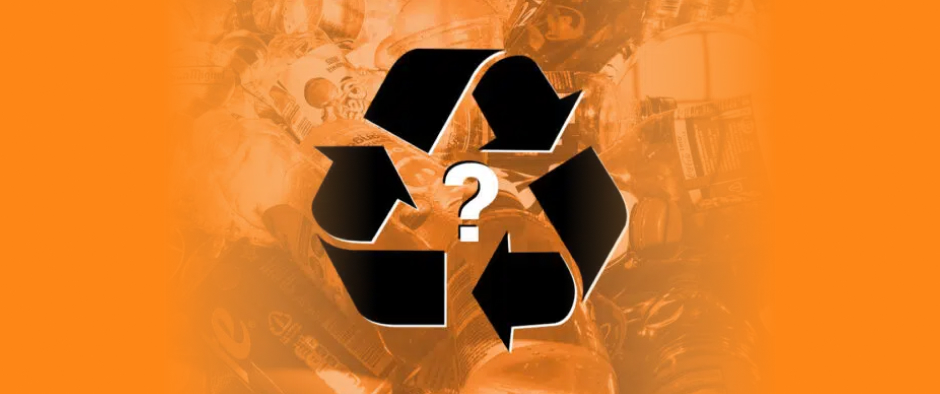We all recognize the 3 cycling arrows as the universal symbol for “recycling”. We see them on packaging for most things from milk jugs, soda cans, grocery sacks, shampoo bottles and cereal boxes. As children, most of us learned to look for those 3 arrows to determine if the item belongs in the recycling bin or the trash bin. We believe that by simply placing an item with three arrows printed or embossed on it in the recycling bin that we are doing right by our planet. We trust that all these items would find new life as a new product. While it is true that the three arrows indicate an item “can” be recycled, it does not mean that it will be accepted as such or that facilities even exist to do so.
Below is a list of the seven types of plastic, their durability, uses, and most importantly, recyclability.
1. PETE – Polyethylene Terephthalate
- Durability: High
- Recyclability: High
PETE or number 1 plastic is one of the most commonly used plastics and is widely recyclable. PETE is most commonly used for food and beverage packaging such as soft drinks, water, peanut butter, salad dressing, mouthwash and much more.
2. HDPE – High-Density Polyethylene
- Durability: High
- Recyclability: High
HDPE or number 2 plastic is another very commonly used plastic and like PETE is accepted at most recycling facilities. HDPE is a durable, stiff material that is used to make laundry detergent containers, milk and water jugs, oil bottles, cleaning product bottles, shampoo and body wash bottles and even those classic, white plastic patio chairs. HDPE is also considered the safest plastic.
3. PVC – Polyvinyl Chloride
- Durability: High
- Recyclability: Very low, should avoid
PVC or number 3 plastic is incredibly durable, highly toxic material that is very rarely accepted by recycling facilities as there are many chemicals/additives that make it a difficult material to recycle. Number 3 plastic is commonly used for pipes, laminate/vinyl flooring, plastic food wrap (cling/Saran wrap), and cleaning product bottles.
4. LDPE – Low Density Polyethylene
- Durability: Low (don’t let the flimsy material fool you, it will still outlive our great-great-great-great-grandchildren!)
- Recyclability: Very low, should avoid
LDPE or number 4 plastic is a stretchy, more elastic material that we most commonly see in grocery/shopping bags, squeezable bottles, toothpaste tubes, bread bags, frozen food packaging and even some furniture. It is very rare that it is accepted by curbside recycling programs as these tend to get tangled in the sorting machinery. In Phoenix, plastic bags cause 2-3 shut downs per day in the recycling facility to cut and remove tangled bags. While these aren’t often accepted by curbside recycling services, many grocery stores and other retail locations like Target and Best Buy provide large bins where you can recycle these into new bags.
5. PP – Polypropylene
- Durability: High
- Recyclability: Very low, should avoid
PP or number 5 plastic is amongst the top 3 most widely produced plastic as it is considered a more safe plastic and can resist heat well without losing its form. Number 5 plastic is often used in disposable diapers, disposable cutlery/cups/plates, yogurt cups, furniture, car bumpers and other miscellaneous car parts. It is difficult to recycle and rarely accepted by city recycling programs and should be avoided.
6. PS – Polystyrene
- Durability: Low, cracks/breaks very easily into smaller pieces
- Recyclability: Very low, almost non-existent, should avoid
PS or number 6 plastic is very commonly known as “styrofoam” and is very commonly used for disposable hot drink cups, disposable plates, fast food packaging, and egg cartons. It is also used in the ever popular, plastic Solo® brand cups, bowls and plates. Number 6 plastic cracks and breaks very easily and is very rarely accepted at recycling facilities as there is essentially no market for this as a recycled material. This is a plastic that should be avoided.
7. Other
- Durability: Varies
- Recyclability: Very low, almost non-existent, should avoid
Number 7 plastic is a category for all other plastics that do not fall under the other six plastic types. This category often consists of plastics that have been mixed with other chemicals or materials, thus, most recycling facilities do not accept it. This includes bio-plastics that are biodegradable or compostable which must be disposed of at industrial or commercial composting facilities in order to actually decompose. Number 7 plastic should always be avoided.
Staying Eco-Friendly
Only 9% of plastics actually get a second life. The remaining 91%? Sadly, most of it ends up in our waterways and oceans to live out the remaining hundreds or thousands of years of its life. So how do we know which items can actually be recycled and which plastics we should avoid? Every plastic item or product is embossed with the universal three arrows with a number (resin code) in the center that identifies the type of plastic. By looking at the resin codes on products before purchasing them, we can determine if an item will be recyclable when we are finished with it. If it isn’t, we can make an informed decision on whether or not that product could be replaced by a more eco-friendly alternative.
